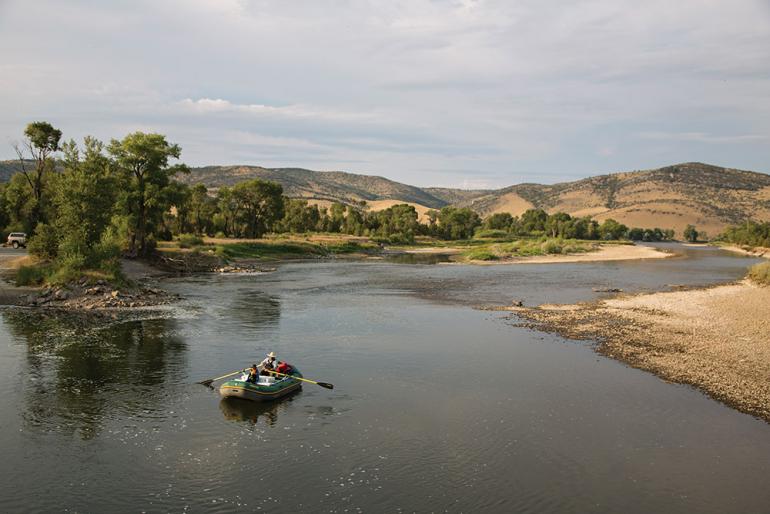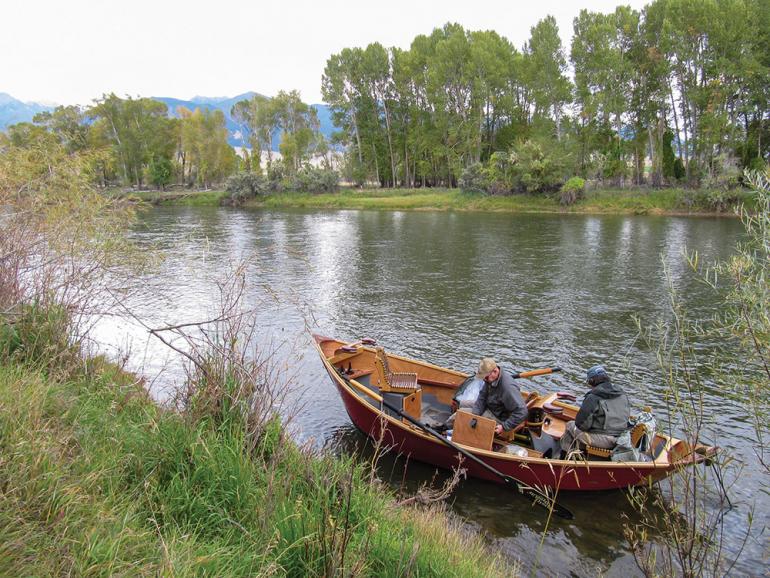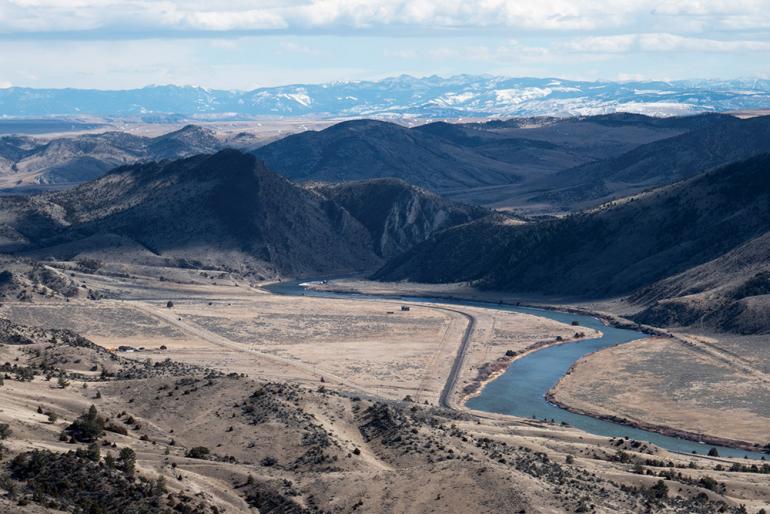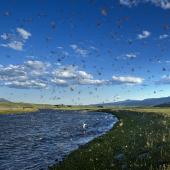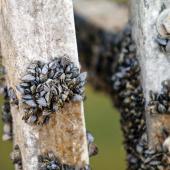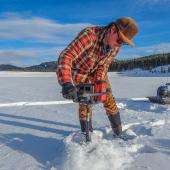Jefferson: Splendid Isolation
A quiet bounty.
Flowing north out of Twin Bridges, and one of the three tributaries creating the Missouri, the Jefferson River is more likely to elicit talk of diversion dams, rattlesnakes, and mosquitoes than excited chatter about abundant trout so often invoked by its local counterparts. Most anglers traveling to southwest Montana are drawn to the lore and legend of rivers like the Madison or Gallatin. “The Jeff” is whispered about in the backs of old bars, not glorified on the covers of national publications. A quality-over-quantity fishery, the Jeff is a great place for the angler who seeks adventure, solitude, and a shot at putting the fish of a lifetime into the net.
Access
While the Jeff may still look a lot like it did during the days of the Lewis & Clark expedition—sweeping prairie vistas, cottonwood-lined banks replete with wildlife, rocky peaks looming in the distance—today it is surrounded mostly by private land. The 12 fishing access sites spread between Twin Bridges and Three Forks provide important accessibility for fishermen and floaters alike. Wade anglers should be aware that parts of the river have very deep runs and, in some places, steep banks. Depending on the time of year and your choice of watercraft, parts of the river can become impassable and some of the gravel ramps unusable.
Flows
Cold Montana winters tend to leave the Jeff gorged with ice and unfishable for much of its length until the mercury begins to climb sometime in April. If you can time it right, just before spring runoff is one of the best times to fish. Snowmelt swells the river into a muddy mess that can reach 12,000cfs, but eventually things settle down. Generally, fishing is best when flows run between 1000-2000cfs. By the time the warm, dry weather of late August arrives, flows typically become too low for fishing. When the water drops and temperatures creep toward 68 degrees, it’s time to start looking for other places to fish. Montana Fish, Wildlife & Parks will enforce restrictions based on flows and water temperatures when conditions merit.
When to Go
The Jefferson River exhibits three distinct, seasonally-driven windows of good fishing opportunity: pre-runoff, post-runoff, and late-fall fishing. Before runoff, when temperatures are warm enough to melt the ice but cold enough to keep snow from melting in the high country, we see the first opportunity for chasing trout as flows increase and water clarity improves. Once runoff hits and transforms the river into a chocolate-colored torrent, savvy anglers and local guides will abandon the Jeff for tamer nearby tail waters. While pre-/post-runoff may be the best windows for overall productivity, the allure of big brown trout is what brings most local anglers to the Jeff’s waters. In late fall, ranchers and farmers “leave more water in the ditch,” so to speak, as they no longer need it for irrigation. With increased flows and cooler temps, brown trout become aggressive and prepare to spawn, making the Jefferson a streamer-fishing playground.
Fish
Because of warmer water temps and flow fluctuations, the Jeff can be a tough place for trout to survive, let alone grow into trophy specimens. Consequently, the trout that do survive year to year in the Jefferson are smart, resourceful, and more thoroughly dispersed than the inhabitants of other area rivers. This can make for great days fishing, and others that humble even the most seasoned of anglers. Mostly a brown-trout fishery, the Jefferson has seen a resurgence of rainbows in recent years thanks to improved management techniques. You can also expect to find whitefish, and down in the lower sections, potentially carp and pike.
Row vs. Wade
The Jefferson can be tough to wade at some of the flows (typically when the fishing is best). If you have the means, this river is best accessed via watercraft. Those without access to a boat should enter the river at one of the 12 official access sites, moving up and downstream below the high-water mark. Floating enables anglers to cover a lot of water, and that can be crucial when fish are more spread out like those on the Jeff. Focus your fishing efforts on good habitat while moving faster through stretches of water that appear less productive.
Regulations
According to the 2020 regulations, the Jefferson allows for three trout to be kept daily, only one of these may be over 18 inches and only one may be a rainbow. The tributaries of Hells Canyon Creek and Willow Springs Creek are closed seasonally at their mouths from April 1-30 and again from September 30 – November 30 to protect the spawning fish. There is no limit on northern pike.
Getting There
Whether you’re looking for a full day of wade fishing or hoping to hit some of the more popular float stretches, you can roughly count on an hour’s drive from Bozeman. Take I-90 west; the closest access is Missouri Headwaters State Park near Three Forks. To fish the upper stretches, continue on to Whitehall. From here, peel back east toward Cardwell, or head south toward Silver Star and Twin Bridges.


